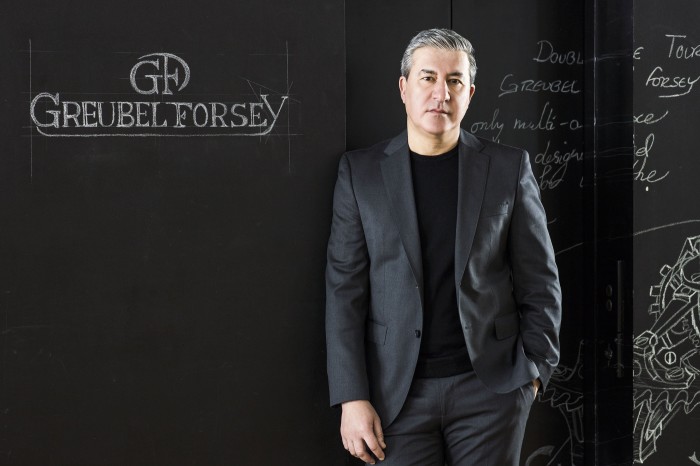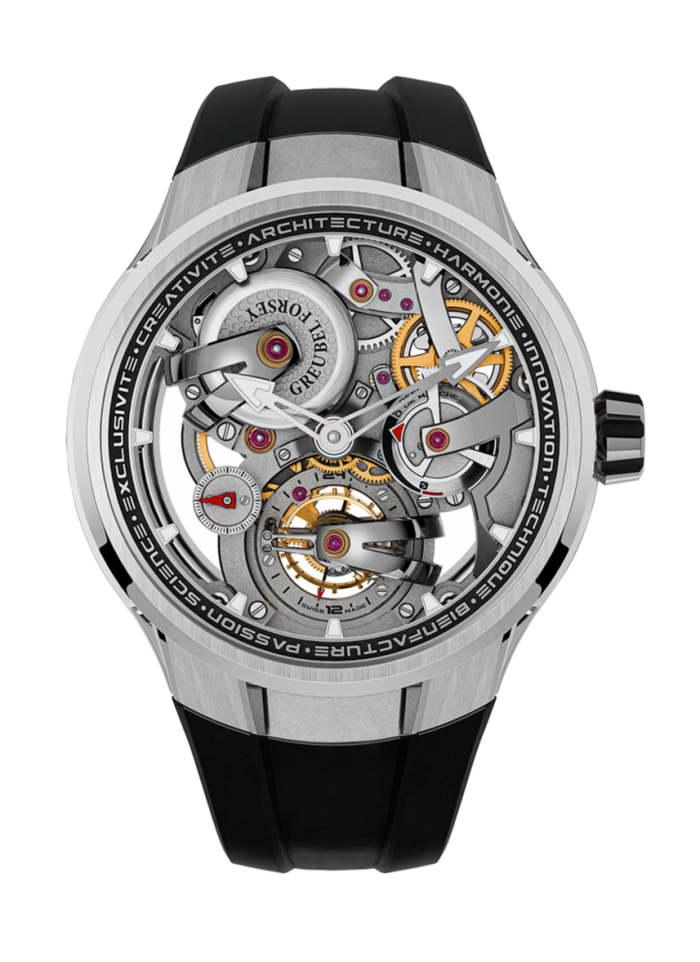Greubel Forsey’s first CEO arrives as independent watchmakers come of age

Roula Khalaf, Editor of the FT, selects her favourite stories in this weekly newsletter.
Swiss independent watchmaking is having a ‘coming-of-age’ moment right now — as some of the most era-defining brands enter their second decades. Typically founded by genius and boundary-pushing watchmakers, these houses are looking towards their next stages of growth and maturity, each employing different strategies for the futures.
Some, like Richard Mille, are installing the next generation of family members to run the show. Others, like the La Chaux-de-Fonds-based Greubel Forsey, are taking pages from the corporate management playbook: in August 2020, the watchmaker hired its first chief executive, Antonio Calce. He is an industry veteran who cut his teeth at Richemont — working on product development at Piaget and Panerai — before taking the top jobs at Corum and Girard-Perregaux.
Calce’s appointment is part of a culture shift for a brand that was founded in 2004 by the watchmakers Robert Greubel and Stephen Forsey, who went on to establish themselves as two of the most innovative minds in the industry, pioneering and patenting seven watchmaking inventions and 30 calibres. Their labour-intensive hand-finished watches command an average price of around SFr500,000 (£434,000) and multiyear delivery times. Only about 2,000 watches have been created to date.
Calce praises the genius of Greubel Forsey’s beginnings, yet is quick to point out how “totally different” the creative brain is — essentially uninterested in strategy and brand building.
Calce says he was brought in to be more vision-focused, “to secure the future” of a company that, he says, had more of a guru-like culture.
“It’s a big responsibility — to make the right choices, to not destroy the brand. The goal is to be here in a hundred years,” says Calce. In March, the company bought back Richemont’s 20 per cent stake in it, and is now independently owned by Greubel, who is president of the board and major shareholder, Forsey, who is technical adviser, and Calce.
Part of Calce’s vision is an increase in production, to a cap of 500 watches annually, over the next three years. Production has already doubled to 200 pieces a year, and there are plans for a new atelier on the existing premises, with employee numbers rising from 120 to about 200.

Among the most dramatic of Calce’s changes is the phasing out of nearly all the 30 calibres, to only four today. Drawing comparisons to ultra-high-end luxury cars, the emphasis is on innovation, says Calce, who also wants to shorten the product life cycle to a maximum five years from the typical 15 or so. Models will be discontinued after this time. “You have no choice — we need great ideas every single year . . . It’s challenging for [our] people because they have to be really inventive, really creative, really crazy,” he says.
Greubel Forsey’s clients, in his view, divide into two “pillars”. First, there are collectors, who most will recognise as Greubel Forsey’s existing customers — those watchmaking aficionados who like “rare and crazy” conceptual watches, says Calce. They are generally aged between 40 and 70, and like pieces such as the highly complex and multi-patented Grande Sonnerie.
Second, there are connoisseurs, who are aged between 25 and 45, and who will buy into a collection of Greubel Forsey watches that will eventually be priced between SFr160,000-350,000 and feature new materials, such as carbon fibre. Calce says this segment will represent 65 to 70 per cent of the business in the future.

The brand’s latest launches are already moving in a more contemporary direction, such as the GMT Balancier Convexe (SFr377,000) set with a titanium globe, a brand signature, and the Tourbillon 24 Secondes Architecture (SFr440,000) that has been marketed as “a city on the wrist”. Both of these are housed in a cool, convex-shaped case that’s notably slimmer and more wearable.
Nadeem Sarwar, who has been selling Greubel Forsey for over a decade and who currently is managing director of the London retailer Swiss Gallery, is optimistic about Calce’s strategy. After years of being unable to meet demand, he especially welcomes the increase in production and is a fan of the sleeker marketing and communication around recent launches.
Calce has also slashed the retail network from 60 to 30 outlets, and eventually wants only 15. “The idea is to keep it more exclusive,” he says, adding that the brand’s first three new flagships — in Dubai, Mexico City and South Korea — will open next year. There will also be a sustainability-led initiative called Renaissance d’une Montre, where clients can add complications to their existing Greubel Forsey watches — such as a new tourbillon or GMT function, to the tune of around SFr100,000-150,000 and SFr60,000-80,000, respectively, with waiting times of 12-15 months.
Comments